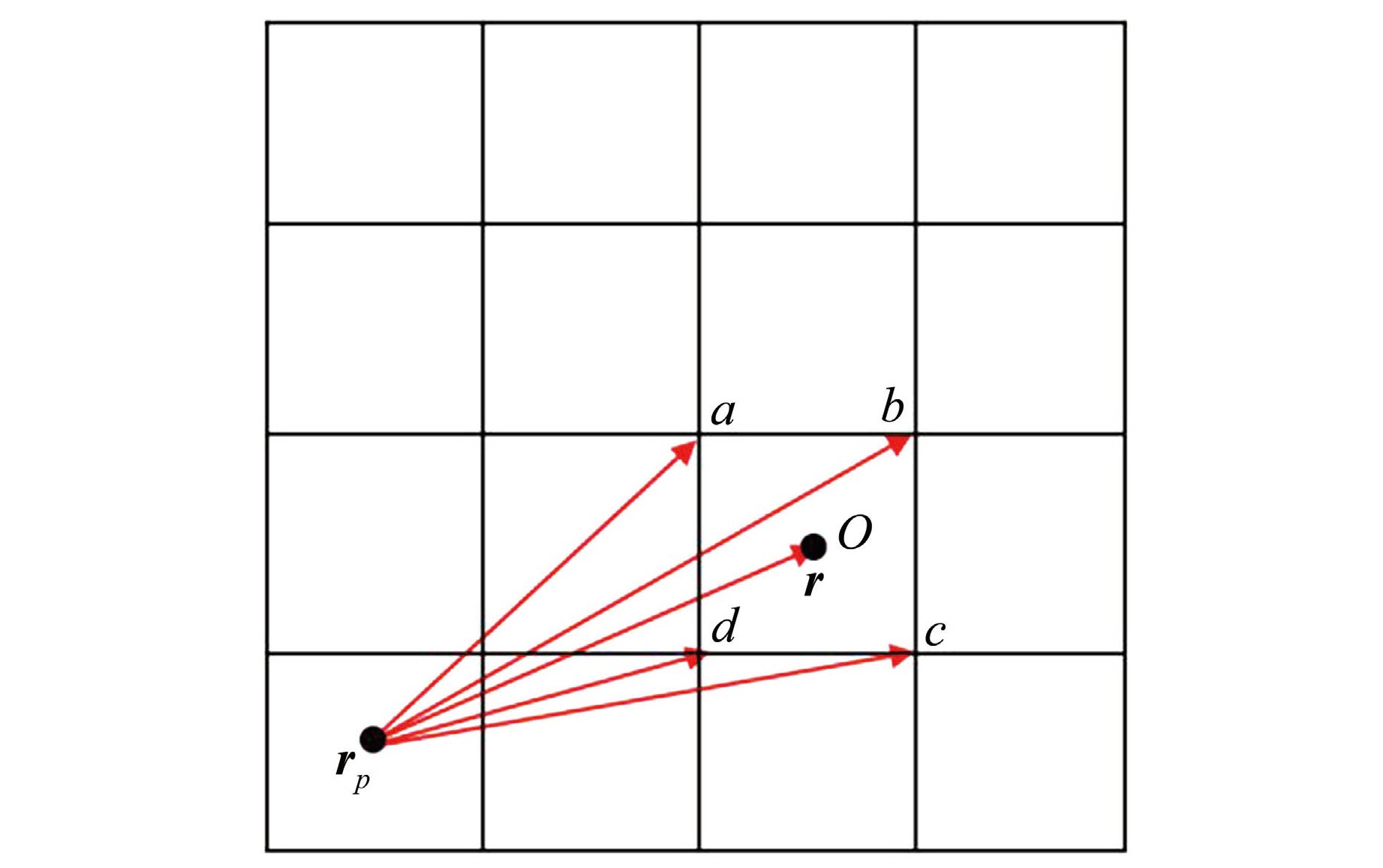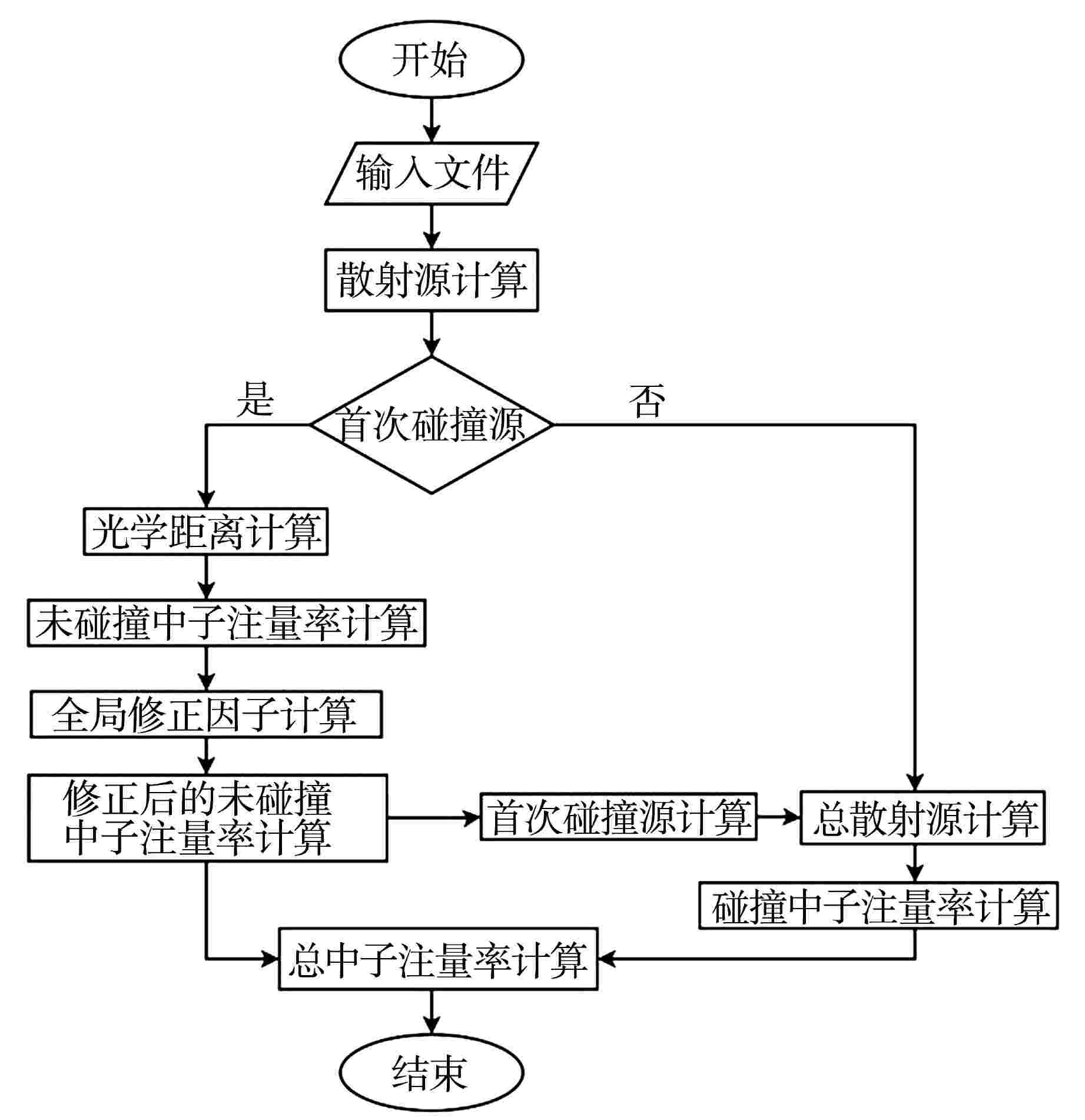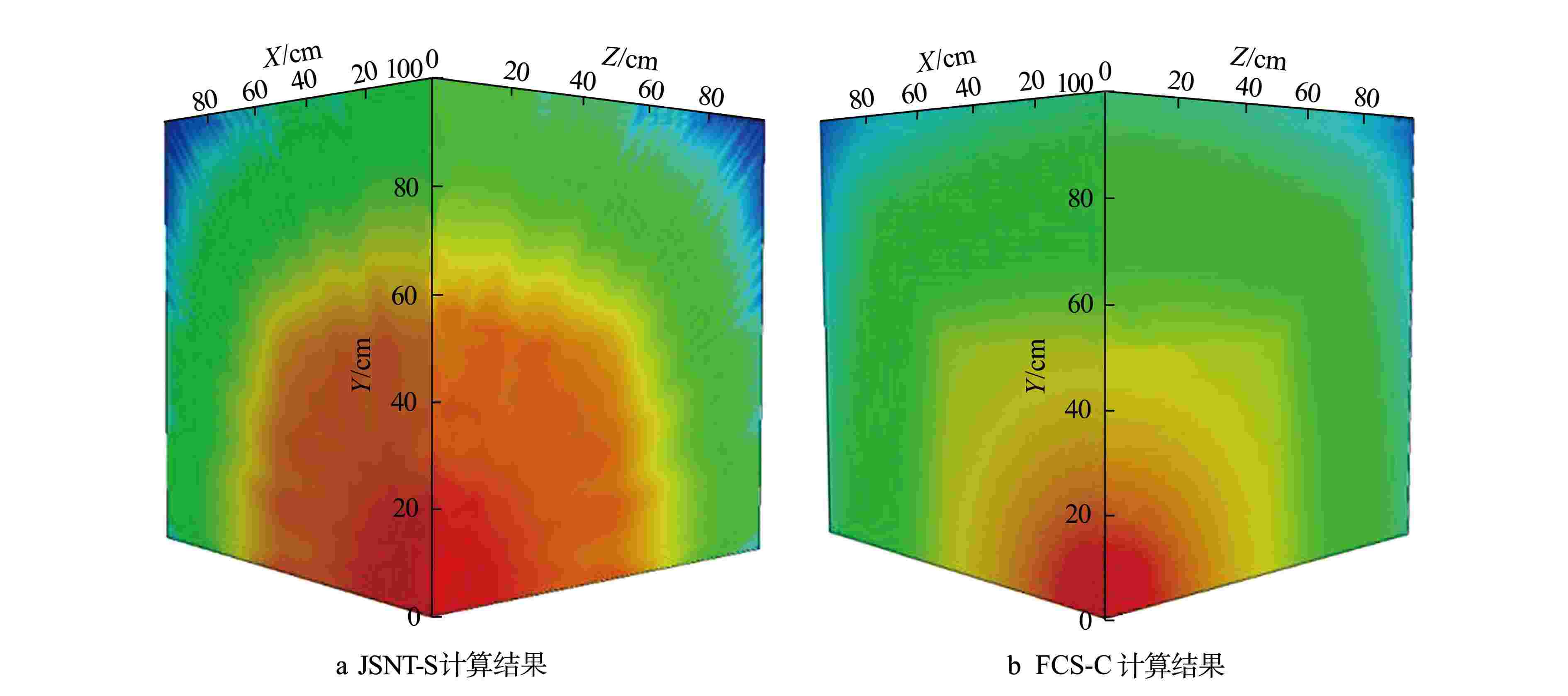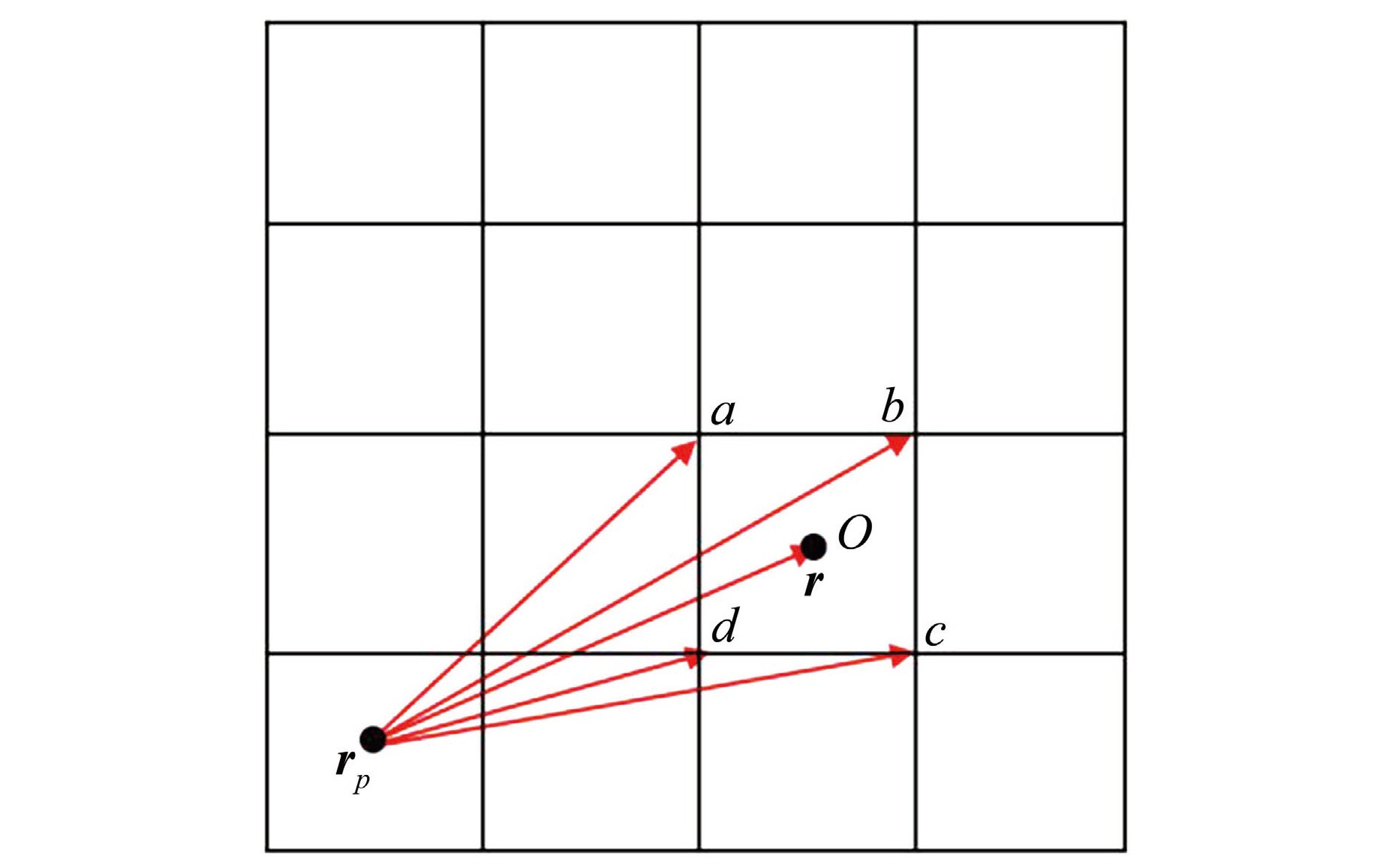Research on Ray Effect Method Based on Global Factor Correction for First Collision Source
-
摘要: 计算孤立源、大空腔中子输运问题时,离散纵标方法(SN)存在射线效应,计算结果失真,常用首次碰撞源方法进行缓解以提高结果可靠性。但在首次碰撞源方法中,需要求解未碰撞中子注量率,通常采用基于网格中心法或网格角点平均值法的射线追踪技术,破坏了未碰撞中子数守恒原则。本文提出采用全局因子修正法对未碰撞中子注量率进行修正,使其满足中子数守恒原则;经过Kobayashi屏蔽计算基准题的检验,计算结果最大误差从6.15%降到3.71%,表明该方法能有效提高计算精度,可为屏蔽优化设计提供数据支持。
-
关键词:
- 全局因子 /
- 离散纵标方法(SN) /
- 首次碰撞源 /
- 射线效应
Abstract: In the calculation of neutron transport problems with spatially localized source or largely void region, the discrete ordinate method (SN) suffers from ray effects, which cause computational inaccuracies. The first collision source method is often used to alleviate the ray effect to improve the reliability of results. However, this method requires the calculation of the uncollided neutron flux. Generally, which is typically achieved through ray tracing technology based on the grid center method or the grid corner average method, destroying the conservation principle of the number of uncollided neutrons. In this paper, a global factor correction method is proposed to correct the uncollided neutron flux to meet the principle of neutron number conservation. Through the test of Kobayashi shielding calculation benchmark problem, the calculation results show that the maximum error is reduced from 6.15% to 3.71%, indicating that the method can effectively improve the accuracy of calculation results and provide data support for shielding optimization design.-
Key words:
- Global factor /
- Discrete ordinate method (SN) /
- First collision source /
- Ray effect
-
表 1 截面参数
Table 1. Section Parameters
区域 源强 /(cm−3·s−1) 宏观总截面/cm−1 宏观散射截面/ cm−1 源区 1 0.1 0.05 真空区 0 0.0001 0.00005 屏蔽区 0 0.1 0.05 表 2 不同离散角度下的 JSNT-S 直接计算结果
Table 2. Calculation Results of JSNT-S at Different Discrete Angle
位置坐标/cm 中子注量率/(cm−2·s−1) 误差/% 参考解 S8 S12 S16 S8 S12 S16 (5, 5, 5) 8.293×100 8.389×100 8.309×100 8.292×100 1.16 0.19 0 (15,15,15) 6.632×10−1 6.614×10−1 6.121×10−1 6.081×10−1 −0.27 −7.7 −8.32 (25,25,25) 2.688×10−1 2.087×10−1 3.169×10−1 2.905×10−1 −22.36 17.88 8.06 (35,35,35) 1.567×10−1 2.052×10−1 2.144×10−1 1.337×10−1 30.94 36.85 −14.66 (45,45,45) 1.044×10−1 2.008×10−1 1.373×10−1 9.749×10−2 92.29 31.5 −6.63 (55,55,55) 3.021×10−2 8.466×10−2 2.500×10−2 3.101×10−2 180.23 −17.24 2.64 (65,65,65) 4.066×10−3 1.515×10−2 2.534×10−3 4.686×10−3 272.65 −37.68 15.26 (75,75,75) 5.861×10−4 2.718×10−3 3.345×10−4 6.726×10−4 363.77 −42.94 14.75 (85,85,85) 8.661×10−5 4.753×10−4 4.935×10−5 9.518×10−5 448.76 −43.03 9.9 (95,95,95) 1.129×10−5 8.038×10−5 5.795×10−6 1.204×10−5 611.99 −48.68 6.66 表 3 JSWT-S与FCS、FCS-C中子注量率计算结果与误差
Table 3. Calculation Results and Errors of Neutron Flux Rates for JSNT-S, FCS and FCS-C
位置坐标/cm 中子注量率/(cm−2·s−1) 误差/% 参考解 JSNT-S FCS FCS-C JSNT-S FCS FCS-C (5, 5, 5) 8.293×100 8.292×100 8.132×100 8.274×100 0 −1.94 0.23 (15,15,15) 6.632×10−1 6.081×10−1 6.429×10−1 6.549×10−1 −8.32 −3.06 1.25 (25,25,25) 2.688×10−1 2.905×10−1 2.690×10−1 2.745×10−1 8.06 0.08 −2.13 (35,35,35) 1.567×10−1 1.337×10−1 1.470×10−1 1.509×10−1 −14.66 −6.15 3.71 (45,45,45) 1.044×10−1 9.749×10−2 1.016×10−1 1.042×10−1 −6.63 −2.7 0.14 (55,55,55) 3.021×10−2 3.101×10−2 2.877×10−2 2.949×10−2 2.64 −4.77 2.38 (65,65,65) 4.066×10−3 4.686×10−3 4.077×10−3 4.159×10−3 15.26 0.29 −2.3 (75,75,75) 5.861×10−4 6.726×10−4 5.872×10−4 5.985×10−4 14.75 0.18 −2.12 (85,85,85) 8.661×10−5 9.518×10−5 8.582×10−5 8.747×10−5 9.9 −0.91 −0.99 (95,95,95) 1.129×10−5 1.204×10−5 1.116×10−5 1.137×10−5 6.66 −1.18 −0.71 -
[1] BATISTELA C H F, VILHENA M T D, BORGES V. Determination of the effective multiplication factor in a slab by the LTSN method[J]. Annals of Nuclear Energy, 1999, 26(9): 761-767. doi: 10.1016/S0306-4549(98)00096-6 [2] 闫宇航. 反应堆压力容器快中子注量计算方法研究[D]. 上海: 上海交通大学, 2012: 9-12. [3] 杨寿海,陈义学,王伟金,等. 三维离散纵标方法在RPV快中子注量率计算中的初步应用[J]. 核科学与工程,2011, 31(4): 294-298. [4] XU L F, CAO L Z, ZHENG Y Q, et al. Development of a new parallel SN code for neutron-photon transport calculation in 3-D cylindrical geometry[J]. Progress in Nuclear Energy, 2017, 94: 1-21. doi: 10.1016/j.pnucene.2016.09.005 [5] 谢仲生, 邓力. 中子输运理论数值计算方法[M]. 西安: 西安交通大学出版社, 2022: 142-149. [6] MASUKAWA F, KADOTANI H, HOSHIAI Y, et al. GRTUNCL-3D: An extension of the GRTUNCL code to compute R-θ-Z first collision source moments[J]. Journal of Nuclear Science and Technology, 2000, 37(S1): 471-474. [7] KOSAKO K, KONNO C. FNSUNCL3: First collision source code for TORT[J]. Journal of Nuclear Science and Technology, 2000, 37(S1): 475-478. [8] 刘永康, 胡永明. 首次碰撞源方法减弱射线效应[C]//第十一届反应堆数值计算和粒子输运学术会议暨2006年反应堆物理会议. 哈尔滨: 哈尔滨工程大学, 2006. [9] 胡也,陈义学,张斌,等. 基于首次碰撞源方法的多维SN射线效应研究[J]. 原子能科学技术,2013, 47(S1): 9-14. [10] 陈蒙腾,陈义学,张斌,等. ARES屏蔽程序中二维射线效应消除方法研究[J]. 原子能科学技术,2013, 47(S2): 700-706. [11] 潘承勇. 浅谈勒让德-高斯数值积分在工程中的应用[J]. 黑龙江交通科技,2021, 44(7): 188-189. doi: 10.3969/j.issn.1008-3383.2021.07.114 [12] 杨超,于涛,邓力,等. 三维并行首次碰撞源模块研制[J]. 核动力工程,2021, 42(2): 39-42. doi: 10.13832/j.jnpe.2021.02.0039 [13] KOBAYASHI K, SUGIMURA N, NAGAYA Y. 3D radiation transport benchmark problems and results for simple geometries with void region[J]. Progress in Nuclear Energy, 2001, 39(2): 119-144. doi: 10.1016/S0149-1970(01)00007-5 -






 下载:
下载:




